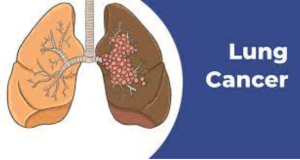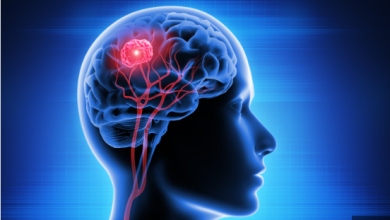Lung Cancer Understanding the Silent Threat

Outline of the Article
I. Introduction
- Definition of lung cancer
- Brief overview of its prevalence and impact
II. Types of Lung Cancer
- Distinguishing between non-small cell lung cancer (NSCLC) and small cell lung cancer (SCLC)
- Exploring the subtypes within each category
III. Causes and Risk Factors
- Smoking as the leading cause
- Other risk factors like genetics, exposure to radon, and environmental pollutants

IV. Symptoms
- Early symptoms and their subtlety
- Progression of symptoms as the cancer advances
V. Diagnosis and Screening
- Importance of early detection
- Common diagnostic methods and screening procedures
VI. Treatment Options
- Surgery, chemotherapy, and radiation therapy
- Emerging treatments and advancements in lung cancer therapy
VII. Coping with Lung Cancer
- Emotional and psychological aspects
- Support systems and resources for patients and their families
VIII. Prevention
- Lifestyle changes to reduce the risk
- Importance of regular check-ups and screenings
IX. Impact on Quality of Life
- Long-term effects on physical and mental health
- Coping strategies and support services available
X. Personal Stories
- Real-life accounts of individuals battling lung cancer
- Inspiring stories of survival and resilience
XI. Global Initiatives and Research
- Ongoing efforts to combat lung cancer
- Promising developments in research and treatment
XII. Public Awareness Campaigns
- Advocacy for smoking cessation
- Promoting lung health education
XIII. Future Outlook
- Advances in lung cancer research and potential breakthroughs
- Hope for improved prevention and treatment methods
XIV. Conclusion
- Recap of key points
- Encouragement for readers to stay informed and proactive
XV. Frequently Asked Questions (FAQs)
- What are the early signs of lung cancer?
- How is lung cancer diagnosed?
- Can non-smokers develop lung cancer?
- Are there alternative therapies for lung cancer treatment?
- How can family members support a loved one diagnosed with lung cancer?
Lung Cancer: Understanding the Silent Threat
Lung cancer, a formidable adversary affecting millions worldwide, demands our attention and understanding. In this comprehensive guide, we will delve into the intricacies of lung cancer, exploring its types, causes, symptoms, diagnosis, treatment options, and the impact it has on individuals and society.
I. Introduction
Lung cancer is a malignant tumor that arises in the lungs, often undetected until it reaches advanced stages. It is a leading cause of cancer-related deaths globally, making it imperative for us to unravel its complexities.
II. Types of Lung Cancer
Distinguishing between NSCLC and SCLC
Non-small cell lung cancer (NSCLC) and small cell lung cancer (SCLC) are the two primary categories, each with distinct characteristics and treatment approaches.
Exploring Subtypes
Within NSCLC and SCLC, various subtypes further define the nature and progression of the disease. Understanding these subtypes is crucial for tailored treatment plans.
III. Causes and Risk Factors
Unraveling the mystery behind lung cancer involves acknowledging smoking as the primary culprit. However, genetic predispositions, exposure to radon, and environmental pollutants also contribute significantly.
IV. Symptoms
The subtlety of early symptoms often leads to delayed diagnosis. Recognizing the progression of symptoms is vital for timely intervention and improved outcomes.
V. Diagnosis and Screening
Early detection remains a key factor in lung cancer prognosis. Familiarizing ourselves with diagnostic methods and screening procedures empowers us to be proactive in our health.
VI. Treatment Options
Surgery, chemotherapy, and radiation therapy are conventional treatments. However, ongoing research introduces innovative therapies, offering hope for more effective and targeted approaches.
VII. Coping with Lung Cancer
Beyond physical implications, lung cancer profoundly impacts mental and emotional well-being. Establishing a robust support system and accessing available resources is crucial for patients and their families.
VIII. Prevention
Simple lifestyle changes, such as quitting smoking and adopting a healthy diet, can significantly reduce the risk of lung cancer. Regular check-ups and screenings play a pivotal role in prevention.
IX. Impact on Quality of Life
Understanding the long-term effects of lung cancer on both physical and mental health helps patients and their families prepare for the journey ahead. Coping strategies and support services are invaluable in maintaining quality of life.
X. Personal Stories
Real-life accounts offer insights into the challenges and triumphs of those battling lung cancer. These stories inspire hope and resilience in the face of adversity.
XI. Global Initiatives and Research
Ongoing efforts worldwide aim to combat lung cancer. From cutting-edge research to advancements in treatment, the global community is committed to finding solutions.
XII. Public Awareness Campaigns
Advocacy for smoking cessation and lung health education is pivotal in preventing new cases. Public awareness campaigns play a crucial role in disseminating information and fostering a culture of prevention.
XIII. Future Outlook
As research progresses, the future holds promise for improved prevention and treatment methods. A collective commitment to lung health is essential for positive outcomes.
XIV. Conclusion
In conclusion, understanding the nuances of lung cancer equips us to navigate this challenging landscape. By staying informed, advocating for prevention, and supporting ongoing research, we contribute to a future where lung cancer’s impact is significantly diminished.
XV. Frequently Asked Questions (FAQs)
- What are the early signs of lung cancer?
- Early signs may include persistent cough, chest pain, and unexplained weight loss.
- How is lung cancer diagnosed?
- Diagnosis involves imaging tests, biopsies, and other diagnostic procedures based on the patient’s symptoms and risk factors.
- Can non-smokers develop lung cancer?
- Yes, non-smokers can develop lung cancer, often due to exposure to secondhand smoke, radon, or other environmental factors.
- Are there alternative therapies for lung cancer treatment?
- Some patients explore alternative therapies, but these should be discussed with healthcare professionals and used as complementary to conventional treatments.
- How can family members support a loved one diagnosed with lung cancer?
- Providing emotional support, attending appointments, and helping with daily tasks are crucial ways to support a loved one facing lung cancer.




